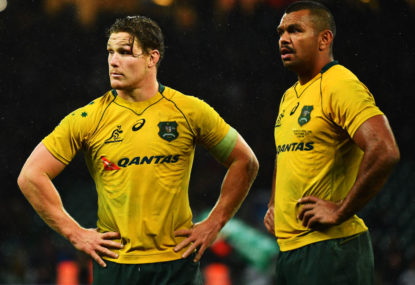In the 1991 Rugby World Cup the Wallabies defeated the All Blacks in the semi-final and kept England tryless in the final. They had only three tries scored against them in the entire tournament.
In 1999 the French defeated the All Blacks in a classic sem-final only to be kept tryless by the Wallabies in the final, where they were well beaten, which helped avenge the 30-24 semi-final knockout Australia suffered at the hands of Les Blues in 1987.
In the previous Rugby World Cup, up until the final against New Zealand, the Wallabies had let in only five tries in the pool of death and scored 26 themselves.
There is truth to the saying that defence wins world cups when you look at the respective winners’ defensive records for each tournament.
There has been a lot of discussion on The Roar about Nathan Grey’s defensive system, in particular when our ten and 12 change positions with outside backs at various times on opposition ball. To be fair, it is not uncommon for the flyhalf to drop back on defence when field position indicates an opposition clearing kick or exit is on the cards.
Grey’s system also has Kurtley Beale at 12 dropping into the back three with Israel Folau and Bernard Foley, the trademark Waratahs counterattacking structure that served them well in 2014.
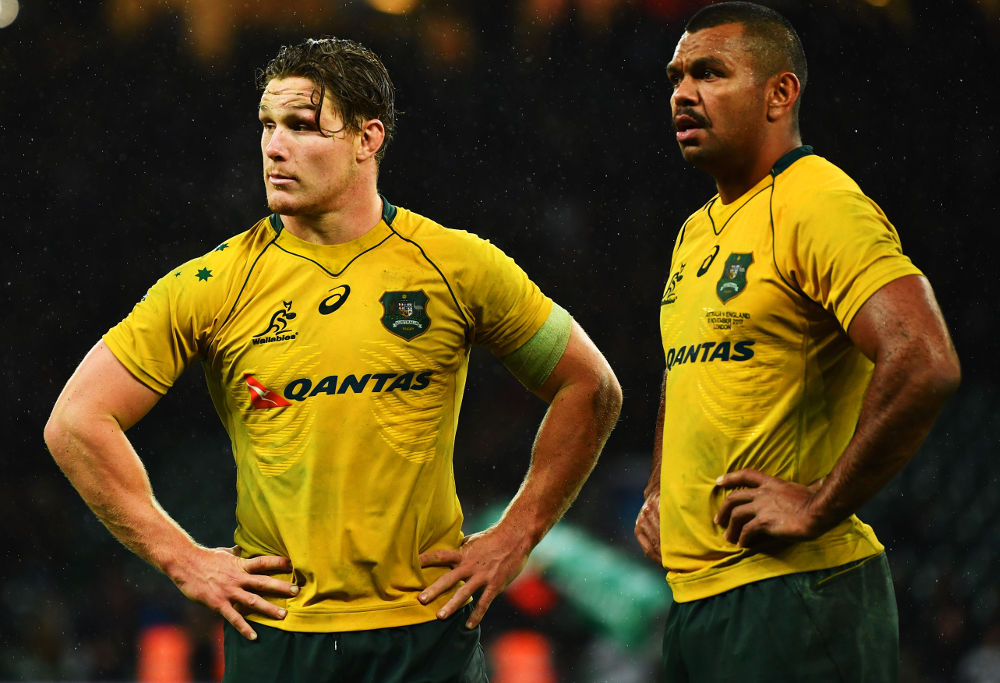
(Dan Mullan/Getty Images)
On certain lineout plays Michael Hooper and his speed are added to the ten and 12 channels as extra cover to do the shooter role and pressure the first and second receivers as part of the inside-out pattern. Once again, this is not an uncommon tactic, but it requires alertness and good communication for other players to cover the space left around the shooter.
We’ve seen Wallaby outside backs try to do this on the number 15 second playmaker that New Zealand prefers with mixed success, and sometimes it is the best option, but it is high risk and can be predictable.
Grey’s system functioned well at the 2015 Rugby World Cup, where experienced players like Matt Giteau, David Pocock, Adam Ashley-Cooper, Kurtley Beale and Drew Mitchell seemed pretty well versed in it and were strong decision-makers, communicators, leaders and organisers.
Then in 2016 and 2017 the Wallabies started shipping a lot of points with the introduction of over 30 new caps and the loss of the older heads from overseas who were critical to confidently holding the system together. Other teams also did their homework of course, but essentially the defensive system doesn’t appear to have changed dramatically since the Tahs in 2014.
The only change was for last year’s second Bledisloe test, where Foley and Beale held their positions in the frontline, and, to be fair, both defended pretty well for most of the match. It makes you wonder why it doesn’t happen more often in Grey’s system.
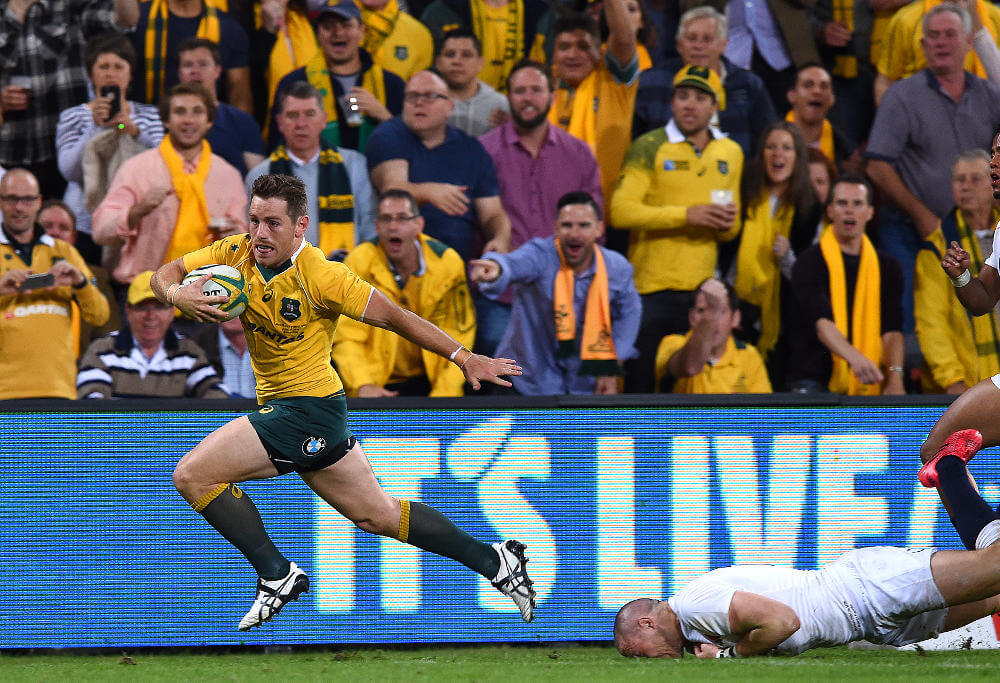
(AAP Image/Dave Hunt)
The departure of Giteau and his ability to kick with both feet, of Ashley-Cooper and of Drew Mitchell’s booming left boot has also left big holes in the Wallabies kicking game. Naturally this impacts on a team’s ability to defend its line too.
What must concern Grey after last season is the very poor individual reads and lack of spacing and alertness in defence. Seeing Wallabies defenders narrowly bunching up, ruck watching, over-committing at the ruck, getting too dispersed or defending blindsides that have no attackers within a bull’s roar is not smart rugby.
It gifts attacking opportunities to teams with playmakers who specialise in exploiting these errors by reading what is in front of them and identifying space or mismatches. Until the Wallabies can minimise these errors, intelligent heads-up rugby teams like New Zealand, England and, dare I say it, Scotland will continue to expose them.
It is worth mentioning too that it is usually the unfortunate Wallabies player who is the last man standing in defence and hung out to dry who gets caned by Roarers for letting in a try when the defensive errors happened much earlier in the movement. Nick Bishop has illustrated some of these compounding errors in his high-quality analysis last year.
Personnel changes and new combinations obviously have a detrimental effect on the system until players are familiar with it, so maybe the system needs to be simplified and adapted before the next World Cup to develop the team’s confidence in it and to focus on heads-up rugby and communication.
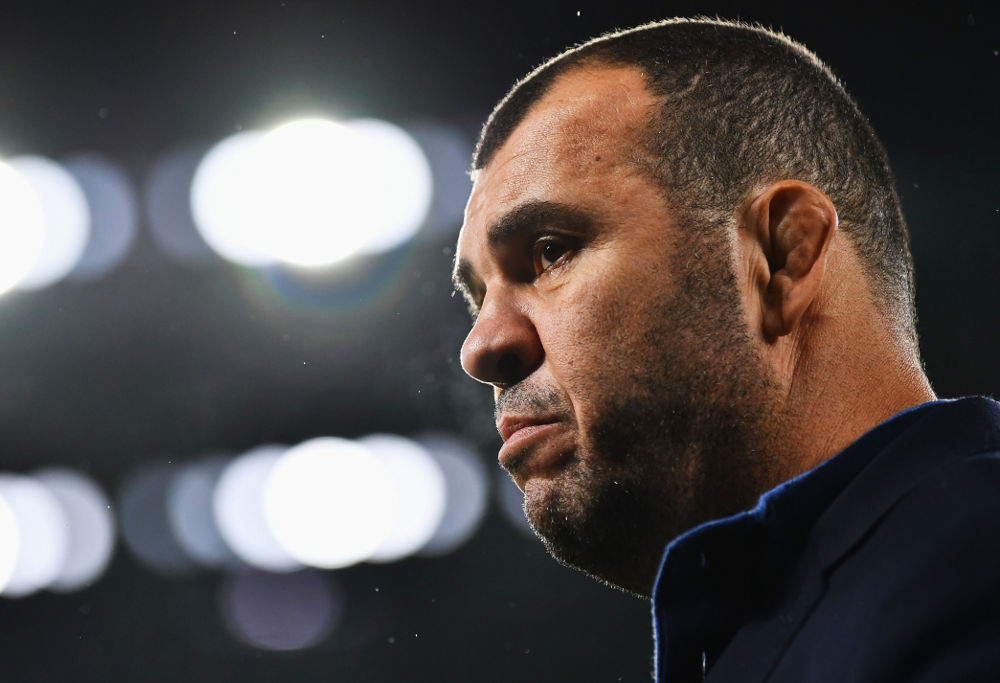
(Dan Mullan/Getty Images)
Maybe Rod Kafer and Michael Cheika need to use this as an opportunity to innovate and get the Super Rugby clubs, players and brains trust involved in developing a new defensive system, or maybe they need to leverage Australia’s advantage in having the strongest rugby league competition on earth to innovate in defence. The All Black and Wallabies have all used rugby league defensive coaches to excellent effect – back when we used to innovate, that is.
At times it looks like our defensive line has no cohesion or intensity and that the players are mentally switched off. It frustrates supporters no end watching players casually jog back into the line, trotting after kicks or generally lacking any urgency in defence for an entire 80 minutes.
The poor performances and lack of impact of our so-called ‘finishers’ in 2017 did not help either when it came to defending well in the final quarter of test matches. Unfortunately this was common among the majority of our Super Rugby teams as well.
My other lingering question: who are the on-field leaders who manage the defensive system? This is becoming a critical role in modern professional rugby and we need cool heads with game vision in there by 2019. Is it Will Genia? Beale? Reece Hodge? Hooper? All four? I have no idea, but the Wallabies defensive line needs glue players in there to hold its shape and provide some direction to less experienced players about when to bang it in, slide, chop, choke or hold.
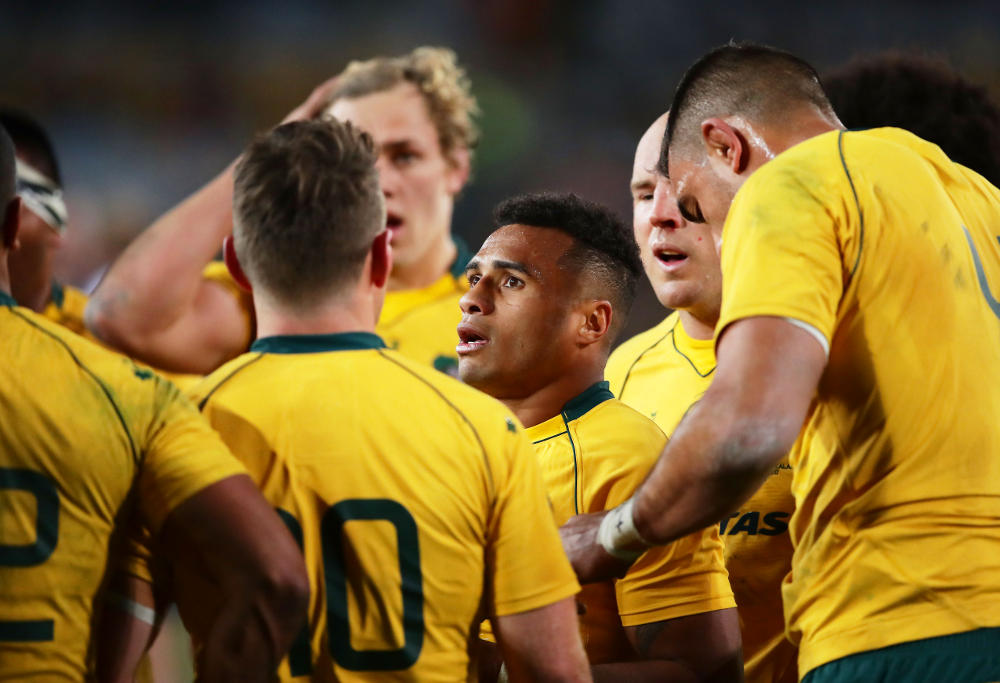
(Matt King/Getty Images)
No doubt the Wallabies attack made significant progress in 2017 with some improved interplay between backs and forwards, so the coaches deserve credit for this. However, the Australian defence has a lot of work to do before 2019, and I suspect a lot of Roarers will be watching and hoping this year that we stop shipping 25-plus points a game.
The 2018 campaign is shaping as a big one for Australia in settling on combinations to achieve consistent success that is underpinned by a solid defensive structure to gain some momentum. The three tests against Ireland is a prime opportunity to show that Grey’s system is still viable against the best teams or to ditch it and introduce another one.
If the Wallabies can get their defensive house in order, they will be a genuine top three team in 2019. But there is no time to waste, and it should start next month when Super Rugby kicks off, with all Australian teams focussing on 100-minute fitness and better defence. We may even beat a Kiwi team if that happens!
What do we think, Roarers? In Grey and Cheika we trust and she’ll be right by 2019? Or is it time to ditch the system and try something new?






























































































